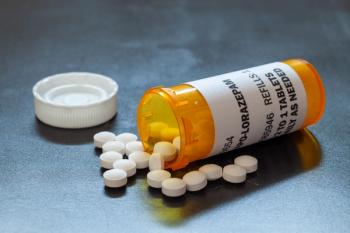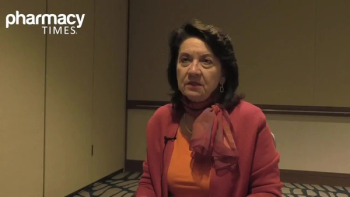
Pharmacy Practice in Focus: Health Systems
- July 2024
- Volume 13
- Issue 4
Optimizing Cholesterol Management With Injectable Lipid-Lowering Therapies
Pharmacologic approaches can increase the use of injectables.
Pharmacists can play a vital role in suitably intensifying cholesterol management among individuals with prior atherosclerotic cardiovascular disease (ASCVD) events. ASCVD is known to have a large prevalence of high-risk events in the United States, with nearly 24 million individuals affected by ASCVD. Among these individuals, almost one-third are not at guideline-recommended low-density lipoprotein (LDL) level goals.
In a Pharmacy Times Clinical Forum, a panel discussed how to optimize cholesterol control among patients with ASCVD who are at high risk for future events. Moderator Katherine Cabral, PharmD, BCPS, BCCP, AACC, associate professor at Albany College of Pharmacy and Health Sciences in New York, noted that there was a significant increase in the use of lipid-lowering therapies among patients with ASCVD in research comparatively from 2014 to 2019. This included an increase among 3.8% of individuals on ezetimibe (Zetia; Merck) and less than 1% of individuals on PCSK9 inhibitors. Further, there was an increase seen among 40% of individuals who were previously not on any lipidlowering therapies.
The 2018 American College of Cardiology and the American Heart Association guidelines recommend that individuals at very high risk of ASCVD be treated with a high-intensity statin or a maximally tolerated statin. Despite this, Cabral noted findings from recent studies have shown that patients at high risk are not being prescribed or adhering to statins due to concerns regarding adverse effects (AEs).
Shreya Patel, PharmD, BCPS, professor of pharmacy and director of graduate and postgraduate programs at Fairleigh Dickinson University in Florham Park, New Jersey, agreed with Cabral, noting that when she practiced as a cardiology pharmacist in the cardiac care unit at Mount Sinai Morningside in New York, New York, her team discharged patients on high-intensity statins. “They came in with [hypertrophic cardiomyopathy (HCM)], and within 48 to 72 hours, they were put on a high-intensity statin with appropriate education,” Patel said. “But after they leave the hospital is when that patient nonadherence is coming in, or they’re not understanding because they’re technically leaving the hospital with at least 5 medications for HCM.”
According to Abhishek Shah, PharmD, a clinical pharmacy manager at Montefiore Medical Center in Yonkers, New York, patients were made aware of numerous AEs that could occur with the use of statins, including dementia or worsening of diabetes, and this information was found to be associated with a lack of adherence. Gaps in guidelines and real-world practice can impact adherence as well. Shah noted that a patient he previously treated received pushback from insurance due to a required prior authorization (PA) for a PCSK9 inhibitor because the patient did not meet clinical guidelines for ASCVD, although the patient had an LDL level greater than 190 mg/dL.
“From my perspective…the PA process is not as bad as it was. I have not seen in 2024 too many patients get denied,” Katherine Di Palo, PharmD, MBA, MS, senior director of transitional care excellence at Montefiore Medical Center in Bronx, New York, said. “With good Medicaid coverage, [such as] where I practice, where we’re 85% government payers, it starts to come to a conversation of what does the patient prefer.”
Although there remain challenges relating to PAs, the opportunity for patient preference in therapy choices allows pharmacists to make sure patients are receiving what works best for them, according to DiPalo. “That’s how our team approaches this,” DiPalo said. “I think that’s the part where the pharmacist is [ensuring the drugs selected] are very patient specific and patient centered.”
Comparing the safety profiles between PCSK9 and inclisiran (Leqvio; Alnylam Pharmaceuticals), Cristian Merchan, PharmD, BCCP, clinical pharmacy manager at NYU Langone Health in New York, New York, noted that the use of inclisiran supported lower LDL level goals and did not increase diabetes or hemorrhagic stroke risk. Also, fewer injections could make inclisiran a more favorable option.
Cabral discussed the case of a 64-year-old man, JB, with a history of coronary artery disease and type 2 diabetes, who currently smokes. He has maintained treatment of atorvastatin (Lipitor; Viatris) at 80 mg once daily but continues to have an LDL level of 120 mg/dL and a high hemoglobin A1C level. However, JB does not want to add an additional oral medication to his treatment. With such a case, Cabral noted it can be challenging to honor patient preference while treating this patient with a high risk of secondary ASCVD on a maximally tolerated statin.
“A little more clarity of how all these options fit together [is beneficial for patients],” Patel said.
The panelists noted that financial aid programs such as co-pay cards could improve the use of injectables, including PCSK9 inhibitors such as inclisiran. “We can counsel the patients to take [injectables],” Agnes Cha, PharmD, AAHIVP, BCACP, senior director of ambulatory pharmacy at Northwell Health in New Hyde Park, New York, said. “It’s our job.”
Articles in this issue
over 1 year ago
Adjunct Lipid Therapies Offer Options for Lowering LDLover 1 year ago
Trends in Emergency Department Follow-Up Programsover 1 year ago
The Impact and Potential of Digital Health Technologiesover 1 year ago
Understanding the 505(b)(2) PathwayNewsletter
Stay informed on drug updates, treatment guidelines, and pharmacy practice trends—subscribe to Pharmacy Times for weekly clinical insights.

















































































































































































































